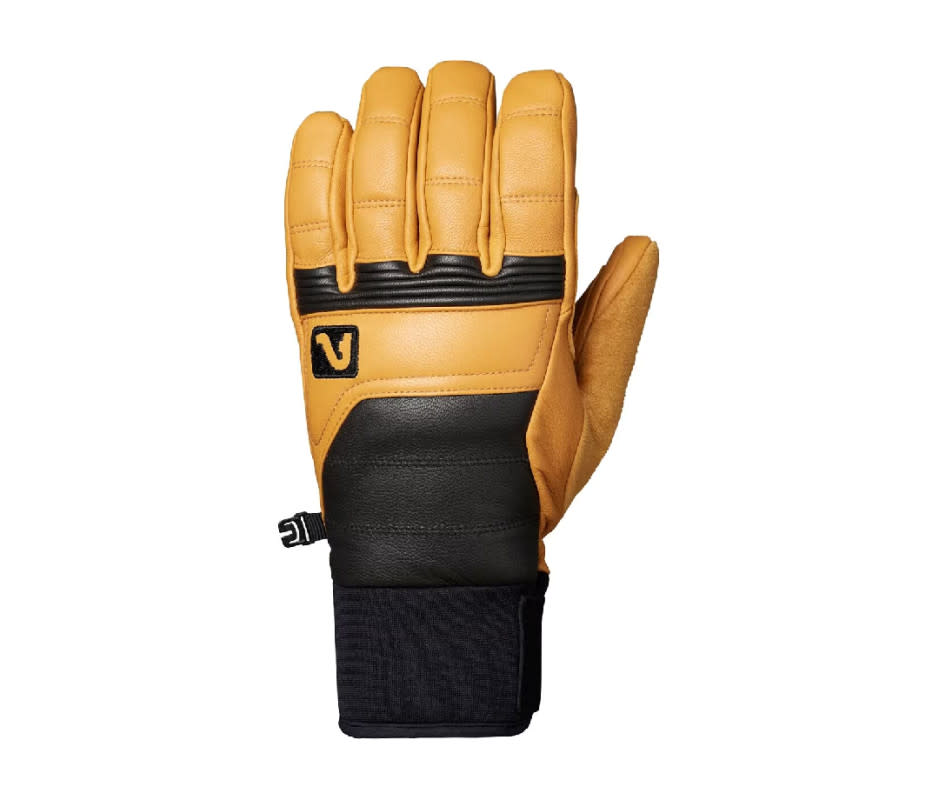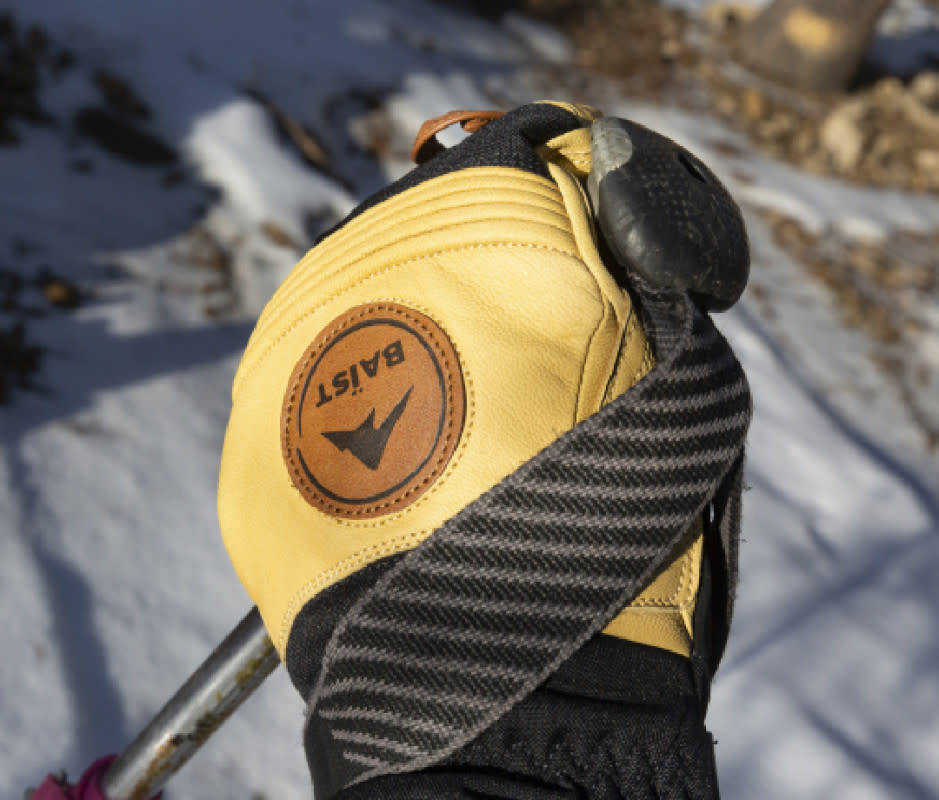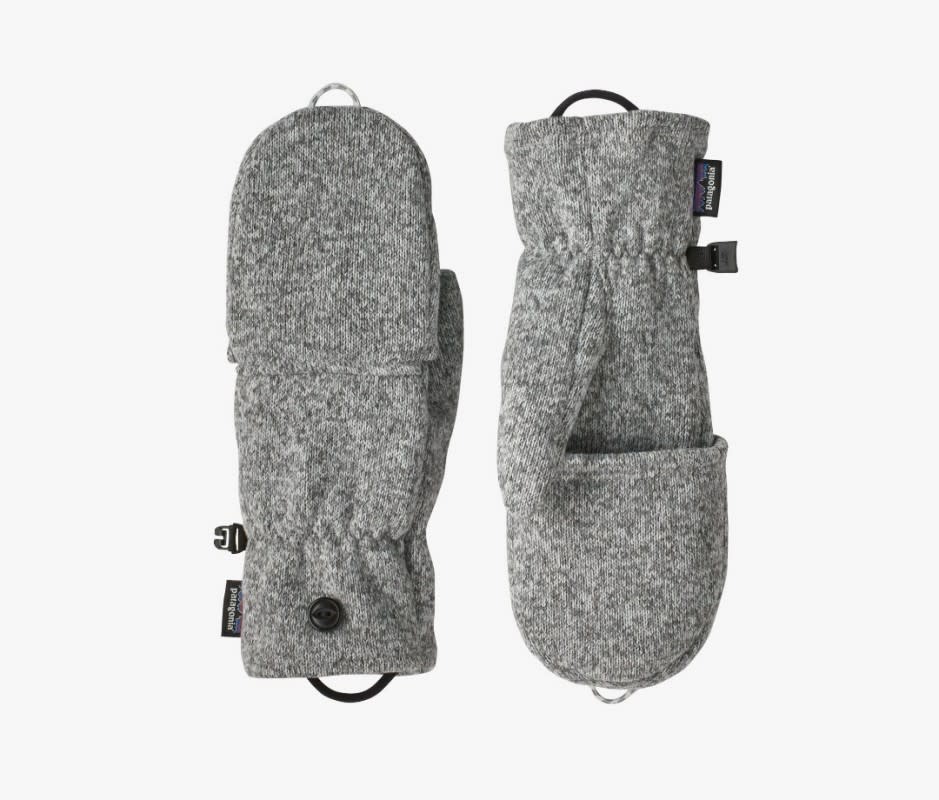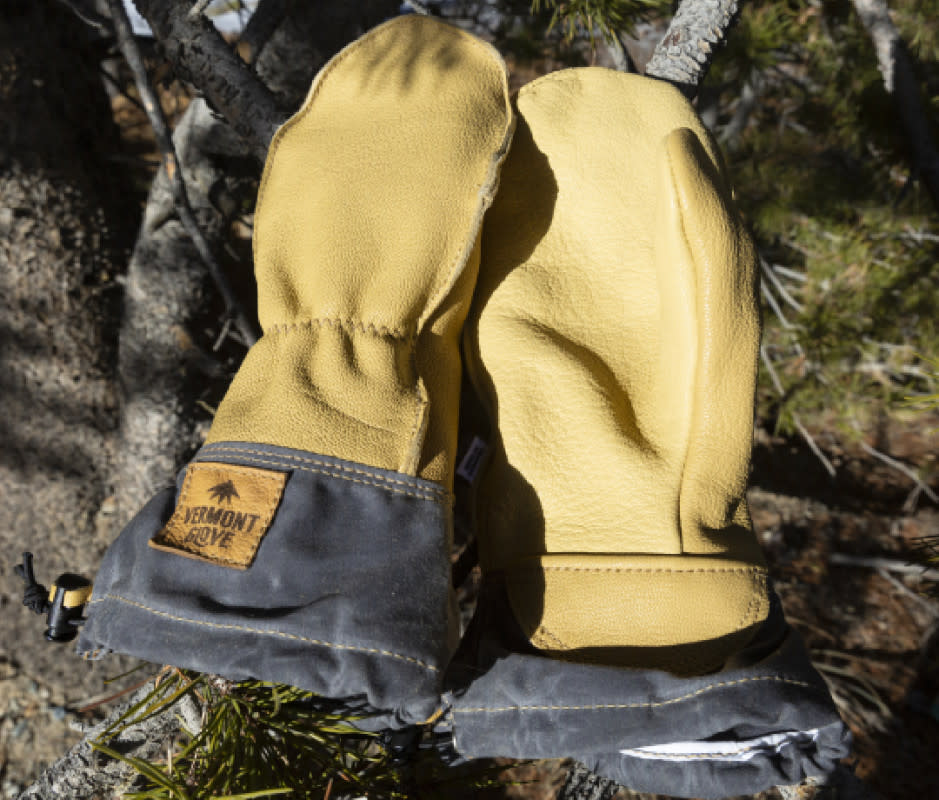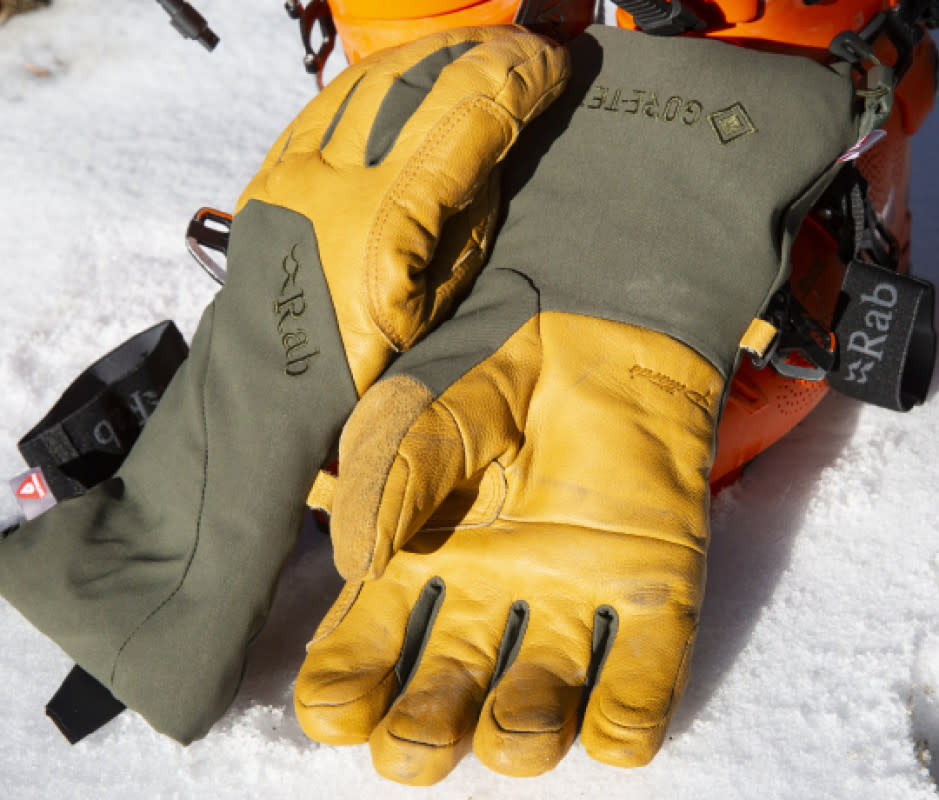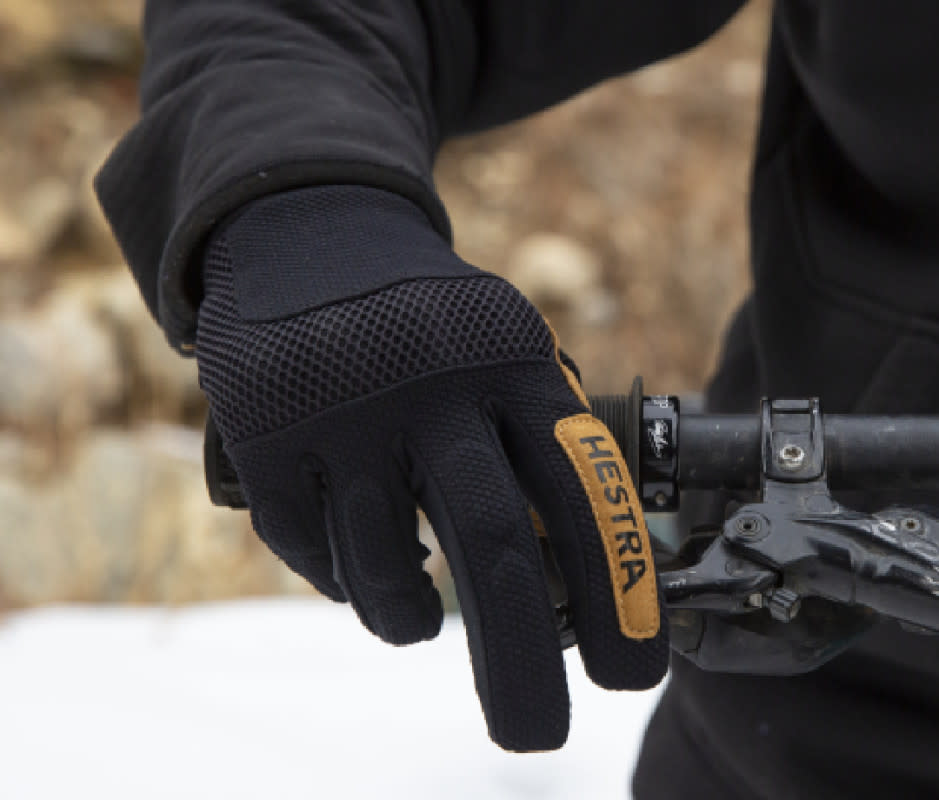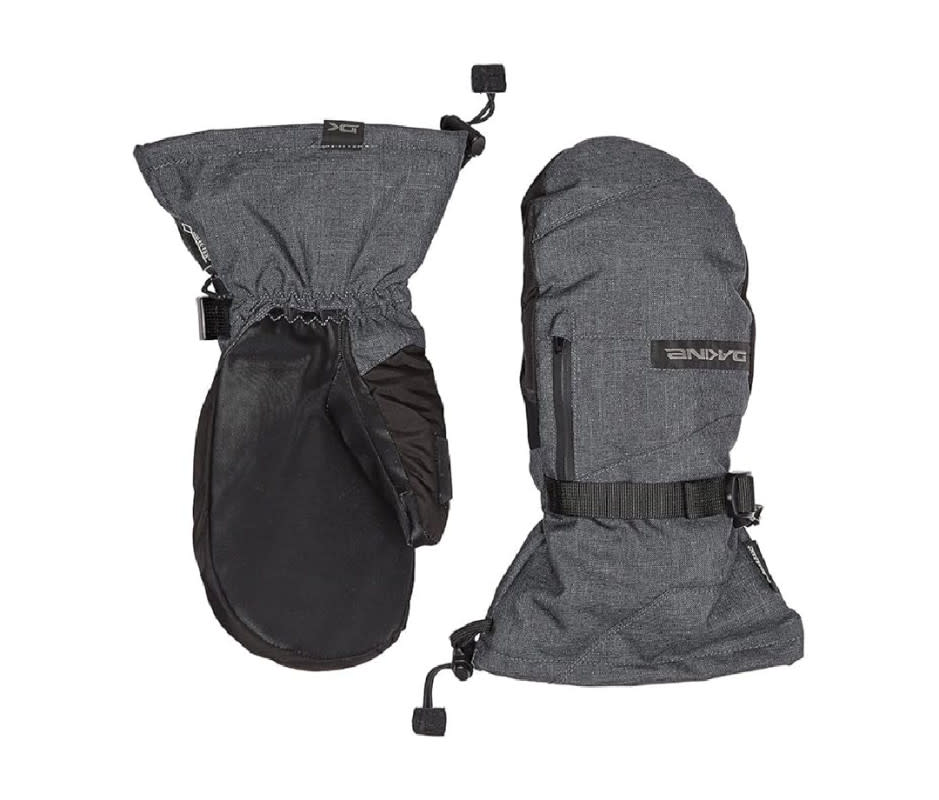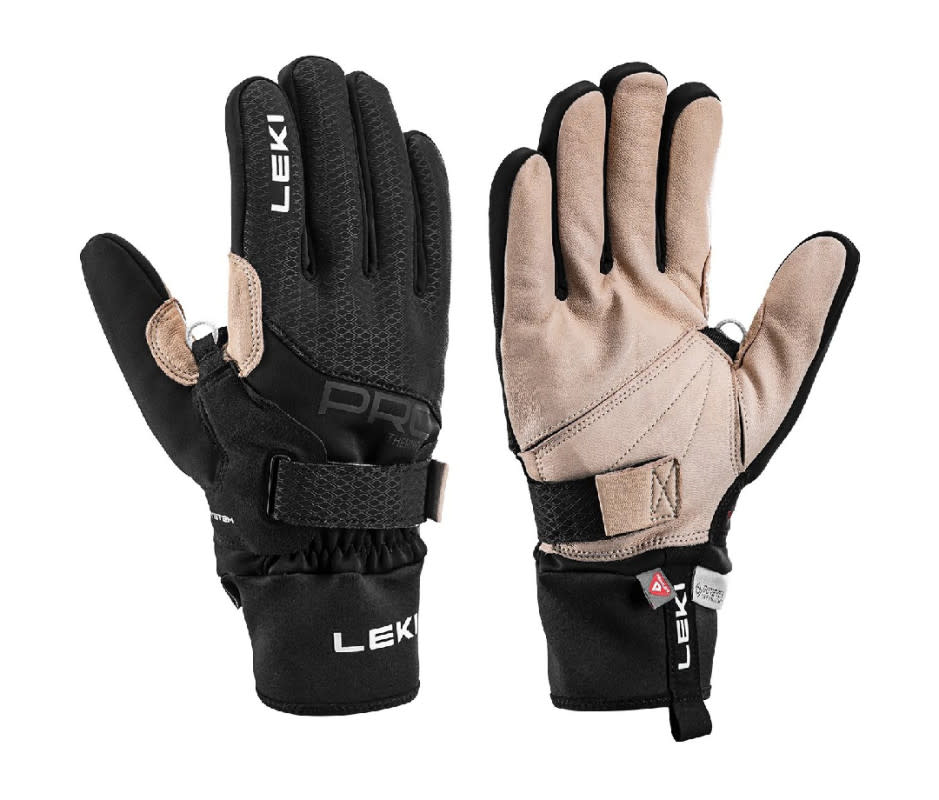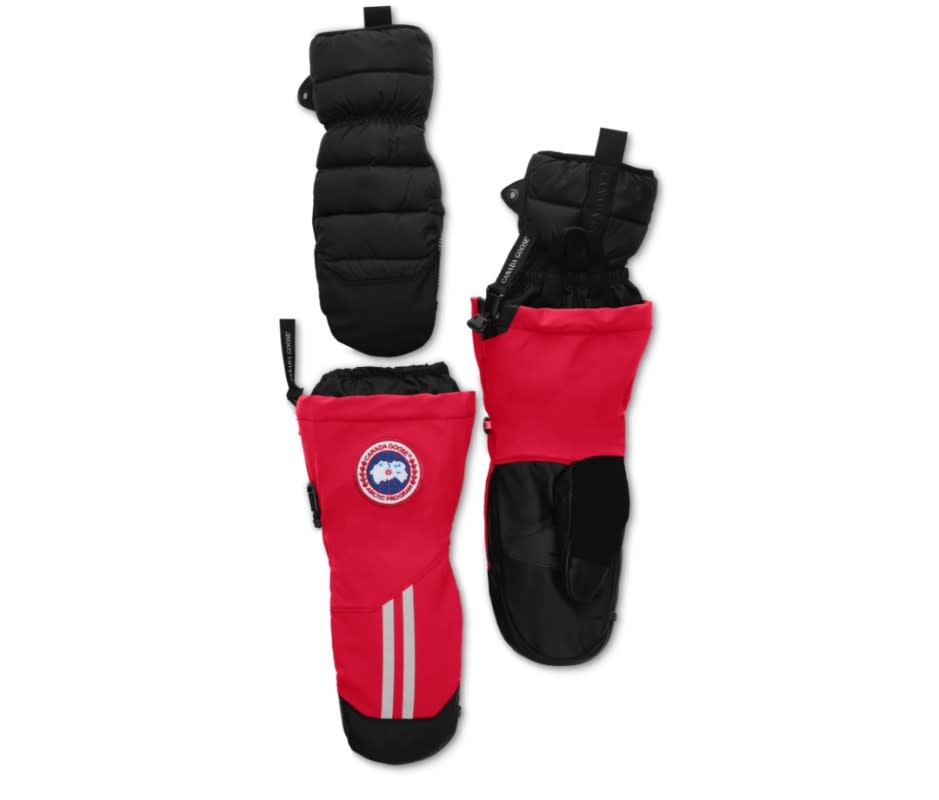The Best Winter Gloves of 2024 for Men
Is your wardrobe ready for winter? Depending on where you live, numbing temperatures may be on the horizon (or already here). Hopefully your winter arsenal includes a down puffer, a smart winter coat, and a pair of weather-resistant boots, but if you don't have a pair of warm winter gloves, you’re not as prepared as you think. Whether you’re hailing a cab, cross-country skiing, or chopping wood to get the fireplace going, a pair of winter gloves for men (or mittens) will keep your hands from freezing.
While it’s easy to bundle up your body for almost any weather, hands present a unique challenge, as it’s difficult to fill gloves with insulation without making your fingers useless. Keeping your core warm and generating body heat through exercise are easy ways to improve circulation and prevent your hands from getting too cold, but in winter weather, a good pair of gloves are a must. Which is why we picked the Flylow Wolverine Gloves as our best overall pick—they are tough, warm, and waterproof but still supple enough for good dexterity, plus they are handsome enough to pull off a cold winter's night out on the town.
The winter activities you need gloves for will dictate the style and level of insulation you need, so we offer our favorites in a wide range of styles below.
Related: The Best Men's Winter Boots for 2024
Why You Should Trust Us
Brief two-year stint in Hawaii aside, Justin Park has lived in places where winter lasts at least half the year. For the past 13 years, he's been skiing, hunting, biking, and just generally trying to stay alive above 10,000 feet in Colorado’s Rocky Mountains. He own about two dozen pairs of gloves—much to the chagrin of his partner—and he's tested dozens more and landed on my favorites for everything from chopping wood to summiting peaks. For this article, he tested an additional dozen or so of the latest gloves from the top brands.
Paul Jebara is a NYC-based freelance journalist and photographer specializing in travel, architecture, design, and men’s style. He’s a third-culture kid, polyglot, and heliophile who’s ventured to 50 countries (and counting) questing after authentic experiences. His writing has also appeared in Condé Nast Traveler, Architectural Digest, Dezeen, Bon Appétit, and more.
Best Overall Winter Gloves: Flylow Wolverine Gloves
Flylow started in the gloves category by stamping their logo on leather work gloves as giveaways at trade shows. They’ve come a long way since those days and now have more than a dozen different gloves in their lineup now, but the work glove style persists in the new Wolverine. While cheap leather work gloves can make a decent ski glove, the Wolverine makes important improvements such as coming pre-treated with waterproofing. The neoprene cuff with Velcro strap is also much more secure than the loose elastic most work gloves employ. The 60 grams of Greenloft wool-based insulation paired with a tough but thin goatskin leather keeps you warm but retains much more dexterity than work gloves, thanks in part to a pre-curved shape. These are only moderately warm, but are a great all-around glove for work, skiing, and other forms of winter play.
Best Value Winter Gloves: Kinco Lined Pigskin Work Gloves
These full-leather pigskin work gloves from Kinco are warm, durable, and a fraction of the cost of most winter gloves. They’re also widely available, so they’re common on job sites and ski slopes all over the U.S. Their synthetic insulation will keep you warm even when wet, but these gloves are best when treated with waterproofing such as Sno Seal or Nikwax, as the untreated leather can easily soak through during use. The pigskin leather is thick and durable, but the gloves lack the mobility of more finely constructed gloves. Getting a larger size can help with warmth, but fit them tight for better mobility in the fingers.
Best Overall Mittens: Swany Toaster Supreme Mitts
Most mitts are cozy, but many render your hands useless and they need to be removed frequently when you actually have to do something with those four fingers and thumb. The unique design of Swany’s Supreme Toaster Mitts, originally created for military expeditions in the Arctic, employs a watertight zipper on the back of the hand to let you poke your hand out when needed. The included touchscreen-compatible liner gloves keep you from freezing your hands during these excursions outside the mitt. The zipper also gives you a slot for tucking in a hand warmer packet for additional warmth, hence the Toaster moniker. The Leathershield goatskin is much softer and more flexible than most leathers used in winter gloves, allowing you a confident grip, even though they’re mitts. The 120 grams of synthetic insulation in combination makes this mitt a great choice for people that want maximum warmth without sacrificing finesse and comfort.
Best Versatile Winter Gloves: Give’r 4-Season Gloves
The wind- and waterproof 4-Season Gloves from Give’r have been rigorously tested in the mountains around Jackson Hole, Wyoming, to ensure they can outlast even the worst winter weather. They’re made of premium cowhide leather paired with breathable synthetic materials in a multilayered design that ensures a warm feel and ample dexterity for any winter task, from bombing snowy slopes to chopping splintery wood. Although they’re tough and capable, keep in mind that these gloves will require some time to break in since they’re pretty thick and bulky.
Related: The Best Men's Winter Boots for 2024
Most Durable Winter Gloves: Baist Everyday Mitts
Mitts are great for warmth and if you’re a skier that spends time punching race gates or busting through tight glades, a full-leather build provides the extra durability you need. Baist is a fairly new, ski-first glove brand based in Vermont that puts an emphasis on durability as evidenced by the substantial reinforcement in high-wear areas on these mitts, with doubled-up goat leather on the knuckles, palm, and space between thumb and index finger where you grip your poles. They come with a warm, removable liner glove made from two layers of synthetic insulations which makes the combination of the two gloves exceptionally warm, but lets you lose the liners on warmer days. Baist claims the system has you covered for temperatures ranging from -20 to 45 degrees.
Best Wool Winter Gloves: Filson Leather Palm Mackinaw Wool Mittens
Made in Seattle, Filson’s Leather Palm Mackinaw Wool Mittens can absorb a third of their own weight in water without feeling damp, so you can go ahead and build that backyard igloo—your hands won’t get soaked. They’re also built with a grippy deerskin palm, rib-knit cuffs, and a moisture-wicking microfleece lining for added warmth and breathability.
Best Fleece Winter Gloves: Patagonia Better Sweater Fleece Gloves
When you can’t decide between gloves and mittens, pick up Patagonia’s two-in-one Better Sweater Fleece fingerless gloves. Their mitten tops will keep your fingers from going numb, but the tops can be folded back and secured with buttons when not needed. They’re made with recycled polyester fleece and are dyed using a low-impact process that requires less water and energy than other dyeing methods.
Best Leather Winter Gloves: Vermont Glove Jefflo Mitts
Vermont Glove is a 100-year-old glove company that makes leather gloves for work and sport that you can wear for years. The gloves take some care and heavy use to break in. But the fairly thick goatskin leather used in the Jefflo Mitt responds well to abuse and likes regular application of neatsfoot oil to help with waterproofing and accelerate the break-in period. The mitt has a sewn-in recycled polyester insulating liner, but there’s enough room to add a liner glove if you need extra warmth. This is a great ski mitt, but once you’ve beaten it into a custom fit for your hands, you’ll want to use it for everything.
Best Winter Gloves for Running: Nathan Hypernight Convertible Gloves/Mittens
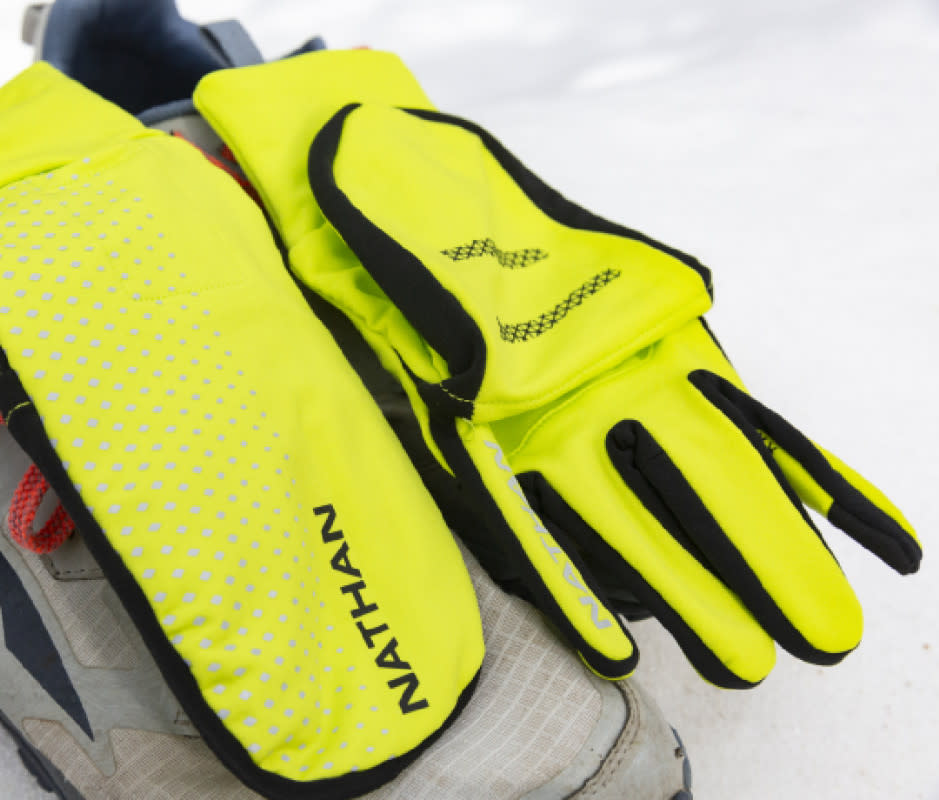
Justin Park
Winter running isn’t for the faint of heart, but it usually doesn’t require heavy-duty gloves. These lightweight, high-visibility convertible gloves from Nathan provide wind-blocking and a pull-over mitt cover for your fingers that can be pulled back to operate your phone or watch or just to let off some steam. The high-vis yellow-green makes you more obvious on winter road runs, but both the yellow and black colorways feature lots of reflective stripes for night visibility. Chamois thumbs provide a soft nose wipe pad and the small back-of-hand pocket can hold a key or small light.
Related: The Best Ski and Snowboard Helmets to Wear in 2024
Best Winter Gloves for Skiing: Rab Khroma Freedride GTX Gloves
British mountaineering brand Rab makes a high-end ski glove that puts strong, supple leather where you need durability and a soft, stretchy nylon where you don’t, making the gloves light, warm, and mobile for resort or backcountry skiing. Primaloft Gold insulation is a synthetic warmth layer that offers a high warmth-to-weight ratio, so while the gloves are thick and lofty with insulation, they’re not overstuffed finger coffins like some ski gloves. The nylon gauntlet is tailored to the wrist enough that you can snug it directly to the wrist and cuff your jacket over it, or wear it in the usual gauntlet style, cinched over top of your ski jacket. The Gore-Tex membrane ensures that the insulation and your hands stay dry, even in wet conditions.
Best Winter Gloves for Biking: Hestra All Mountain 5-Finger Sr. Bike Gloves
True midwinter fat biking on snow calls for heavy-duty insulated gloves just like skiing, but for shoulder seasons mountain biking, Hestra’s rugged but still breathable All Mountain Bike Gloves are the ticket. There’s no liner here and the mesh on the back of the hand lets the gloves breathe when you’re pedaling hard and heating up. But they’re thicker than a summertime bike glove thanks to a synthetic suede paired with grippy polyurethane reinforcements that keep your hands where they belong. There’s also substantial knuckle protection for those inevitable run-ins with trees and rocks. Numbered sizing allows you to get a precise fit so there’s not material bunched when you’re gripping the bars and the neoprene cuff holds everything in place.
Best Winter Gloves for Snowboarding: Dakine Titan Mitts
This mitt actually delivers two gloves in one: a lined Gore-Tex shell combined with a removable mid-weight fleece Storm Liner glove inside. This combination works year-round as you can wear just the shell for warmer winter days, combine the two for the coldest days, and even rock just the liner gloves for sunny spring laps. It’s also a great value for a 3-in-1 setup that costs less than most Gore-Tex shell gloves that don’t include a liner. The Dakine Titan Mitts are well-made, but you also get the assurance of a two-year warranty on workmanship which adds to the already substantial value here. The mitts are also very light thanks to synthetic shell materials but you get reinforcement in the palm via durable polyurethane.
Related: These Are the Best New Skis for 2024
What to Look For in a Pair of Winter Gloves
When shopping for winter gloves for serious outdoor activities, look for features similar to those found on a quality winter jacket: a breathable waterproof outer shell, lightweight construction, and fleece or down insulation for warmth. You’ll also want to make sure they have a grippy palm material (so you don’t lose control of that snow shovel) and touchscreen compatibility so you can use your phone without exposing your hands to the elements. Sometimes though, the bells and whistles of a technical glove aren’t necessary—a simple wool or leather glove might be all you need when bopping around town.
Warmth: Just like outerwear, gloves help keep you warm by blocking wind and moisture, trapping heat near the hands with insulation, and allowing moisture (sweat) to escape so you don’t get clammy which makes hands feel colder. The level of warmth provided by a pair of gloves is largely dictated by the type and amount of insulation used. Insulation uses loft, or trapped spaces of air, to hold warmth close to your hand inside the gloves. Your hands, no matter how cold they may feel, are much warmer than the winter air outside the gloves, so you want to retain as much as of that heat as possible. Blocking wind is another key ingredient since if cold air can easily enter the gloves, you won’t retain heat for long.
For high-output winter sports such as running and cross-country skiing, your hands can actually get pretty hot and sweaty, so you’ll want a lighter glove that lets moisture escape but still blocks wind. It’s also possible to bring in supplemental warmth via electronic heating systems or hand warmers. Hand warmers generate heat through a chemical reaction when exposed to oxygen and they are a great option when you’re standing still in the cold or just can’t seem to keep your hands warm no matter what gloves you use. I like the Ignik Reusable Handwarmers that give you 10 hours of heating over a 72-hour period. Battery-powered heated gloves are expensive but they work and are often the last resort of those of us whose hands are always cold, including folks with Reynaud’s and other circulation issues that make it very difficult to keep extremities warm in winter conditions.Dexterity: For casual use and sports such as alpine skiing that don’t require much from your hands, you can prioritize warmth and load up on insulation with puffy marshmallow-like gloves and often mitts. For working outside, you usually need your fingers and finer movements and will need to balance insulation and bulk with dexterity in the fingers. Going thinner around the fingers obviously makes it tougher to insulate them significantly, but using thinner, wind-blocking shell material is usually a better bet than thick, stiff leather.
Durability: It’s hard to gauge the long-term durability of a glove just by looking at it or reading a product description. Leather gloves in general outlast modern synthetic materials such as nylon and polyester, which are more prone to tears and split seams. Higher-denier fabrics such as Cordura are often used because they provide some toughness but are still relatively thin compared to leathers.
